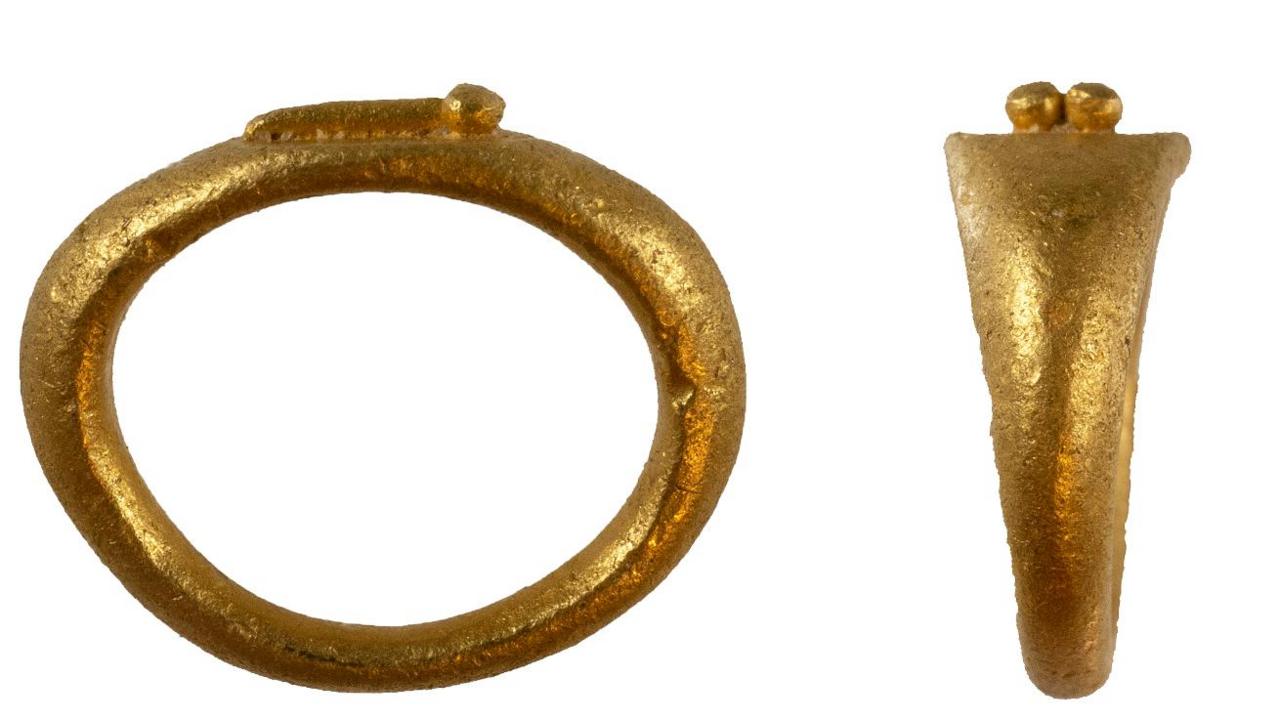Rare phallus ring to go on display

In Roman imagery, the erect phallus was a symbol of protection
At a glance
A gold ring decorated with a phallus will go on display in Littlehampton, West Sussex
The Roman Age ring was declared a treasure by a coroner and is considered a find of local importance
It is thought the ring would have been worn by a child
- Published
A rare Roman ring decorated with a phallus will go on display for the first time.
The gold ring, which was found by a metal detectorist near the coastal village of Climping in West Sussex, dates from approximately 43-200 AD.
It was declared a treasure by the coroner and is considered a find of local importance.
The finder and landowner decided to donate the ring to Littlehampton Museum for free.
Due to the small size of the ring (14mm in length), it is thought the piece of jewellery would have been worn on the finger of a child.
"It’s not something that we would consider giving to a child today, but in Roman times the phallus was a symbol used to protect against evil or bad luck," said Julia Edge, curator of Littlehampton Museum.
"It provides an insight into how our sensitivity to, and interpretation of, symbols changes over time," she added.

The item was found by a metal detectorist on the foreshore near Climping in January 2022
It is thought the child - to whom it probably belonged - could have come from the Roman villa at Angmering, or smaller villas in Littlehampton, Arundel or Walberton.
It will go on display as part of the museum's Romans exhibition running from June to the end of October.
Follow BBC South East on Facebook, external, on Twitter, external, and on Instagram, external. Send your story ideas to southeasttoday@bbc.co.uk, external.